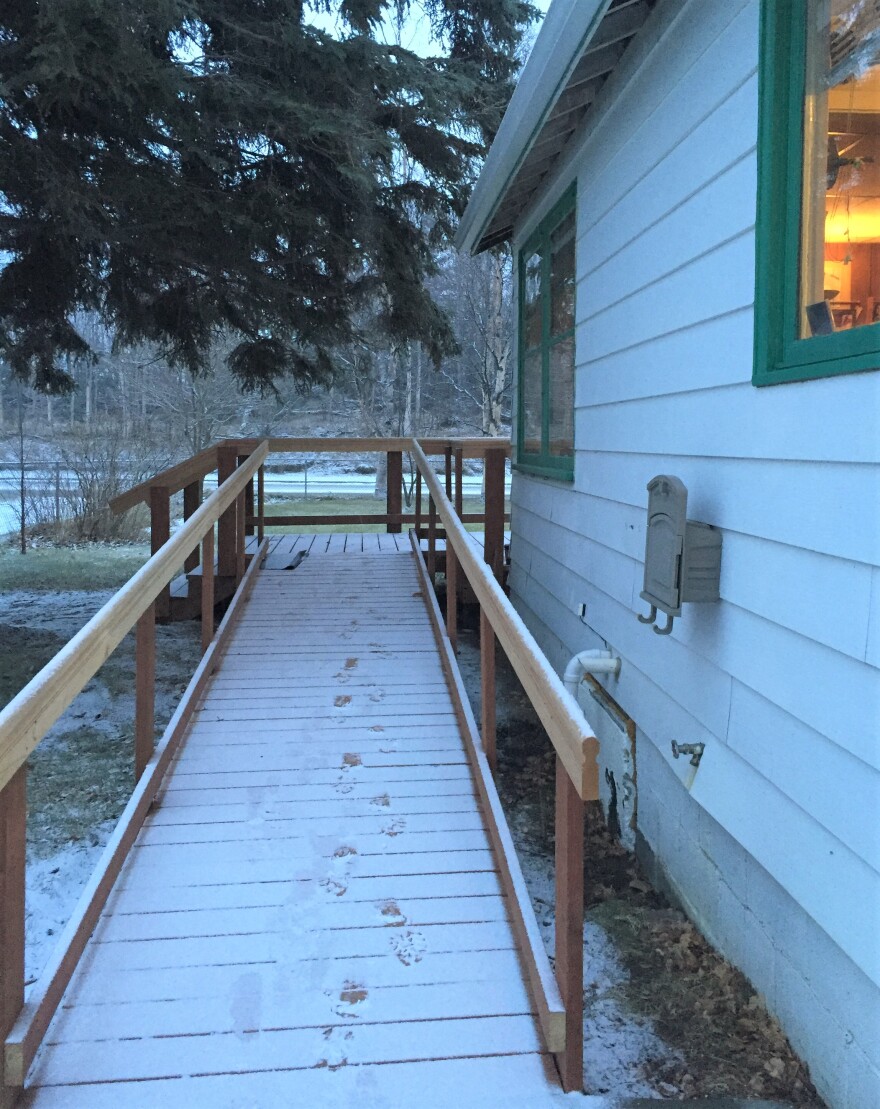Shirley and Tom Clements’ home is steeped in memories. Photos going back six generations cover the walls of the packed living room. Knick-knacks and animal figurines fill shelves above the kitchen sink. They’ve been in the house for more than 20 years.“Pretty much we landed a place, and we pretty much plant ourselves," Shirley said, sitting at her kitchen table on a recent afternoon. "We don’t go out for much options.”But will the tiny 50-year-old house keep being an option as they age? They’re adapting their home to make that a possibility.When the Clements moved into their Palmer home in the mid-90s, it had some cosmetic quirks, like gold-colored shag carpet. They pulled that out fairly quickly and put in better flooring. Eventually, they added more insulation to the walls and updated the heater. But over the past couple years, as the couple has aged, they’ve needed new types of renovations. Shirley had both knees replaced in 2009.“It’s been rough. Well, with the knee problem, I couldn’t lift my knees over the tub to get into the tub," she explained.So Tom decided to replace the tub in their tiny bathroom with a walk-in shower. It took him more than a year. First, he had to learn to extend the house to make room for the shower, then he taught himself to tile.“That ain’t bad for an old mechanic, huh?" he said, laughing. "Actually, I learned to do that from a book.”He also installed wider doors for Shirley's walker.Other renovations are now being completed by Alaska Community Development Corporation through the Senior Access Program. Homeowners can receive up to $15,000 to make large and small modifications, sometimes with volunteer labor, to help stretch the funds. Renters are eligible for less.ACDC housing manager Curt Christiansen said the objective of the program is to keep seniors in their homes as long as possible because it’s better for the whole community, and that’s what most seniors want.“The overall cost to society is less if we can keep them in their own home and there are probably a lot of mental health benefits to staying in your own home," he said. "You know, I see it with my parents and stuff, they don’t want to go somewhere else. They want to be where they raised their kids and stuff.”The Clements' home is where they cared for their grandkids, who would play on the tiny deck in the fenced yard. Now, the rotting old deck is gone, replaced by a new ramp built by the Boy Scouts as part of the Senior Access Program.
Internal modifications included getting rid of the bumpy carpet in the bedroom that could cause tripping, and changing out sink handles.“It’s hard sometimes for seniors to grip things," like round knobs on sinks and doors, Christiansen explained. "So we change out to levers.”Down a short set of stairs in the passageway between the kitchen and the garage they'll install a flip down bar and better handrails to help with Shirley's balance problems. Similar bars will go into the bathroom, too.Though the statewide program can serve about 70 homes per year, in many places it has a three-year-long waiting list. Different parts of the state have different lists, which vary in length. Christiansen said in Anchorage, there isn't much of a wait right now.Jim McCall is with the Alaska Housing Finance Corporation, which funds the program. He said people shouldn’t wait until they need their homes to be accessible.“I tell people, 'Plan ahead.' Because obviously anything you can do now to continue to age in place, especially now while you’re still working and you can pay those things off, before you retire, even better.'”Alaskans can apply for home renovation loans from AHFC to do some of the upgrades – a program that’s increased in popularity recently. Planning ahead is also important because there are one-to-two-year wait lists for senior housing, too. Nursing homes can cost around $300,000 per year in Alaska. McCall, who has been working with seniors for 20 years, said without proper housing, people are more at risk for illnesses and behavioral issues, even seniors.Housing "is a basic human need, so if you don’t have that, things start to go downhill pretty rapidly whether you’re 25 or whether you’re 85," he said.Shirley Clement and her husband want to keep aging in the house and the neighborhood where they've spent the last 23 years.“I anticipate us being here, though, 'til God takes us home," she said.With the renovations from the Senior Access program, they might be able to do that.Want to know what else Alaska seniors are thinking about? Check out the Senior Survey results here.
You can also listen to more Solutions Desk stories and conversations on aging here.



